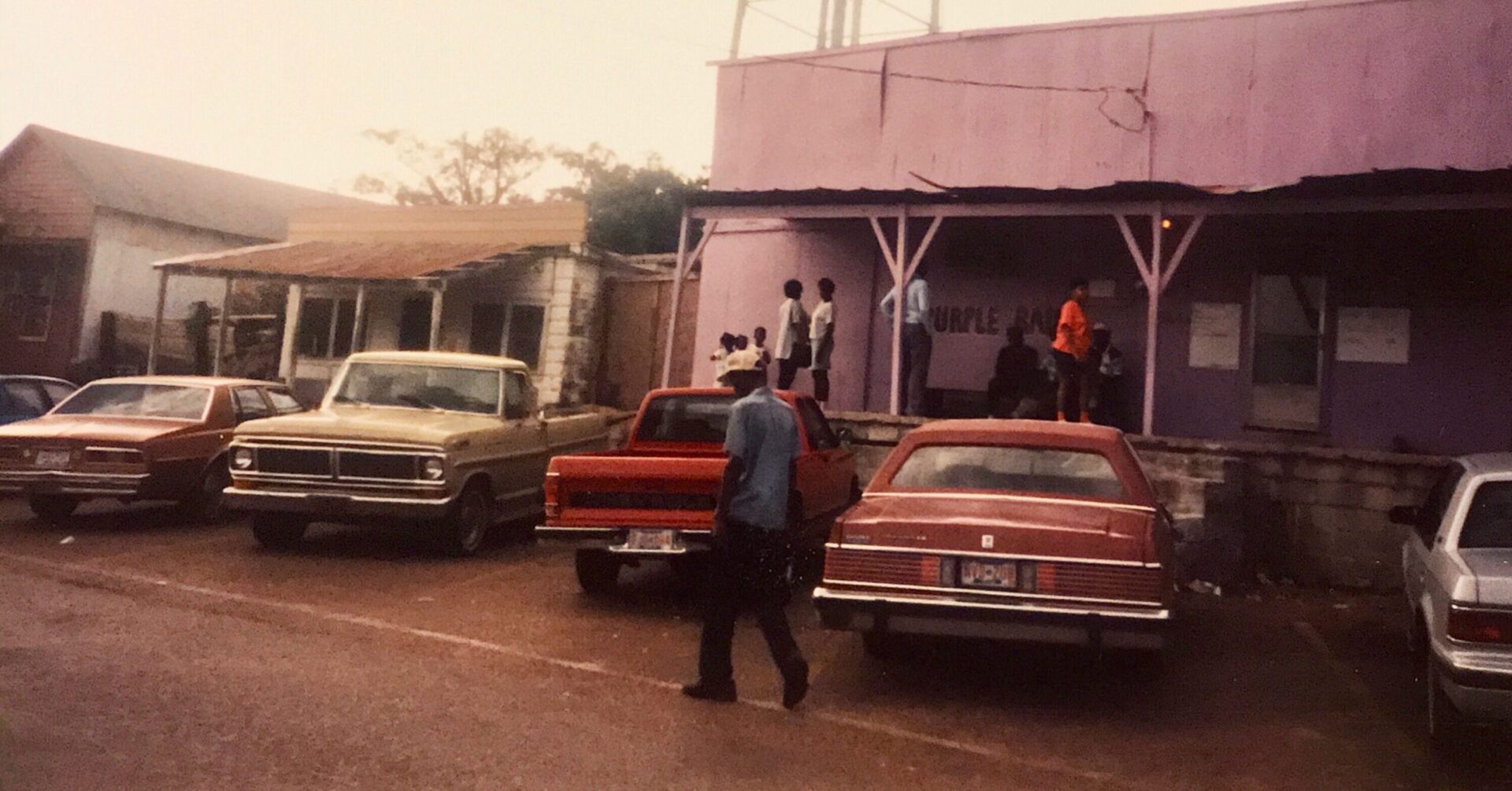
Hewes Avenue, named for the first mayor of the modern city of Gulfport, Mississippi, was and is a major thoroughfare that leads from the East Beach neighborhood, where some of my relatives lived, to Bayou View, where other relatives of mine lived, so we were always heading up that street during my summers with my grandparents in Gulfport. But in between those two neighborhoods was another neighborhood that fascinated me as a boy. North of the railroad along Hewes Avenue was a Black neighborhood with some old juke joints on both sides of the street, with sandy, dirt parking lots and big, ancient oak trees shading the yards and the buildings. Old Barq’s Root Beer and Coca-Cola signs out in front announced the places, and in nice weather, groups of young men sat in chairs under the trees out in front, some of them occasionally shirtless. Looking inside one of the establishments, I could occasionally catch a glimpse of a pool table, or a man with a cue stick. My grandmother seemed to consider the place disreputable, but I was strangely attracted, although I never ventured up there, even once I was a teenager and could have.
I never really knew the name of that community in those days, but I have come to realize that it was called Shady Grove. Because there has never really been a good, definitive history of Gulfport, I have no idea how the community came to be, but I wonder if it was formed by African-Americans that had been employed by the Gulf & Ship Island Railroad as it was building its rails and the city of Gulfport. Sadly, the colorful, vibrant community I recall is largely a thing of the past, as I learned on a recent visit to the area. Old clubs like the Shady Corner Cafe, the Lullabye Inn and the King Edward Bar are gone without a trace. The musicians, players and hustlers that once populated the area have vanished, and no crowds hang out under the trees. But amazingly, one establishment still survives, Holder’s Nightlife, a rough and weatherbeaten juke that looks at if it could have never stood through Hurricane Katrina and yet somehow did. It’s not really a blues spot, more of a DJ club apparently, judging from their profile on social media. Yet it still has the classic image of what the whole neighborhood once looked like when I was young.
Founded 1963 Relaunched 2019. The Postmodern South.

I’ve been in and around that area many times. Hewes avenue, between the track and Passroad is convenient roadway between the beach and airport, but the neighborhood is colloquially known as Brown Town. It is not a place to be romanticized, though it has that sort of sleepy and simple southern facade. It’s a place of abuse and lost youth — young people with broken lives end up there because it’s a haven for hard drugs, prostitution of the lowest sort, and just a place of particular sorrow and suffering. Scratch that facade open if you dare. There is something very very ugly underneath.